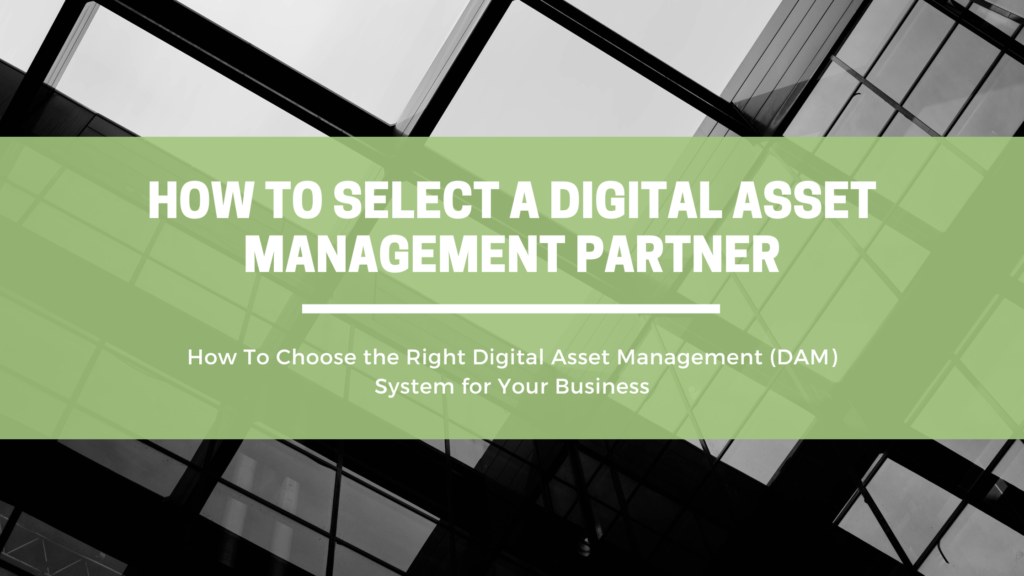How to Select a Digital Asset Management Partner

Once you’ve determined that your organization can benefit from better Digital Asset Management (DAM), it’s time to decide which provider is right for you. Here are five simple steps to help you evaluate your options.
How To Choose the Right Digital Asset Management (DAM) System for Your Business
1. Evaluate Your Digital Assets and How They Are Used
It’s impossible to choose the right digital asset management partner for your business, without first evaluating your digital assets, common formats and how they are used by your team. Start by evaluating the size of your digital asset library and the rate at which it grows. Then move on to the storage and retrieval methods most commonly used.
Next, consider who has access to this content. Is it multiple users in multiple locations? Do they need mobile access? It may take some time to acquire the answers to these questions, but your team is sure to have this information. All you need do is ask them where their pain points are, and let the answers flow.
2. Consider Your Technology and Functionality Requirements
The next step in the process of choosing the right DAM solution is to consider the features your team requires to do their best work. The answers you receive from step one should help you determine your functionality requirements, such as:
- project-based tagging,
- multiple image search options,
- martech integrations,
- cloud-based storage,
- and controls for who can and can’t access images.
3. Evaluate Industry and Market Fit
Step three in the process of choosing the right digital asset management system is to evaluate your industry and the market in which you operate. It’s important that your DAM provider understands your business, your industry and has a solution that accommodates it.
If your vendor has a deep understanding of what you do, they’ll be more likely to provide reliable advice and best practices for successful implementation and ongoing support. Ask your vendor to supply references that match your company’s industry and size, and be sure to ask what support they offer after the onboarding process.
4. Consider Upfront and Ongoing Software Costs
Beyond the obvious software costs, there are other costs to consider when implementing a digital asset management system, such as:
- software licenses,
- installation and configuration,
- data migration,
- product training, and
- ongoing support.
Be sure to evaluate your own needs and ask your vendor to clarify their fees for support, training and customizations. It’s important to take all these costs into account and balance them against the Return on Investment (ROI).
5. Create and Distribute a Request for Proposal (RFP)
Once you’ve done your research and proceed your list of criteria that your DAM solution needs to meet, it’s time to create and send an RFP. In your RFP, detail your pain points and how you see a DAM solution can solve them.
It’s important to share real-world examples of current pain points and the anticipated solutions, so that you may set expectations. You also need to include a list of the features and functionality you’ll need to solve those pain points.
The next step is to create a distribution plan to ensure the RFP ends up in the right hands. Make sure you scan the market for vendors that match your requirements, focusing on those with specific industry experience. Be wary not to cast your net too wide, though, as it could make for a more complicated review process.
Get Started with Digital Asset Management
Unlike traditional DAM systems, OpenAsset is a project-based digital asset management solution specifically designed for AEC marketers. With dozens of integrations and useful features, OpenAsset is the martech you need to create high-converting content, proposals, presentations and much, much more. Contact OpenAsset today to get started.
The post How to Select a Digital Asset Management Partner appeared first on OpenAsset.